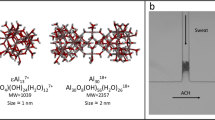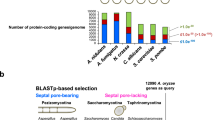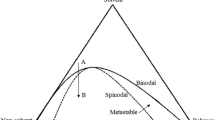Abstract
RECENT work in this laboratory has confirmed that the pores in the sieve plates of functioning phloem are normally occluded, fairly densely, with slime fibrils. Stems of Helianthus seedlings and thin stolons of Saxifraga sarmentosa were plunged into briskly boiling water for 3 min before conventional fixation in glutaraldehyde and osmium, embedding and sectioning for electron microscopy, In almost all cases, the pores in the sieve plates appeared plugged with densely-staining material (Fig. 1a and b); where this was not obvious the micrographs strongly suggested that the section had passed between the shrunken plug and the pore wall. We regard these observations as evidence against the views often put forward that the plugging is an artefact of preparation caused either by longitudinal turgor release or by local enzyme action1,2.
This is a preview of subscription content, access via your institution
Access options
Subscribe to this journal
Receive 51 print issues and online access
$199.00 per year
only $3.90 per issue
Buy this article
- Purchase on SpringerLink
- Instant access to full article PDF
Prices may be subject to local taxes which are calculated during checkout
Similar content being viewed by others
References
Weatherley, P. E., and Johnson, R. P. C., Intern. Rev. Cyt., 24, 149 (1968).
Shih, C. Y., and Currier, H. B., Amer. J. Bot., 56, 464 (1969).
Cronshaw, J., and Esau, K., J. Cell. Biol, 34, 801 (1967).
Author information
Authors and Affiliations
Rights and permissions
About this article
Cite this article
SIDDIQUI, A., SPANNER, D. State of the Pores in the Functioning Sieve Plate. Nature 226, 88 (1970). https://doi.org/10.1038/226088a0
Received:
Issue date:
DOI: https://doi.org/10.1038/226088a0



